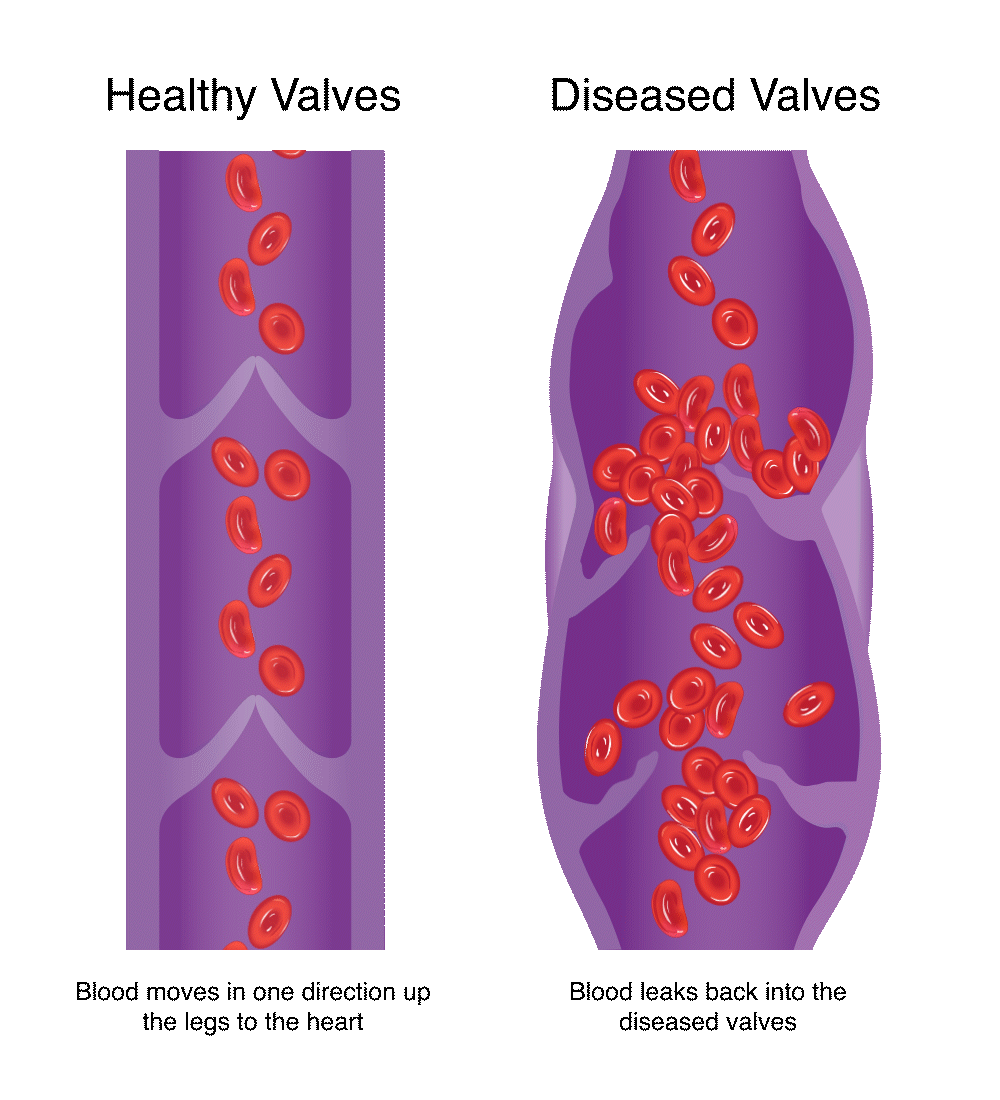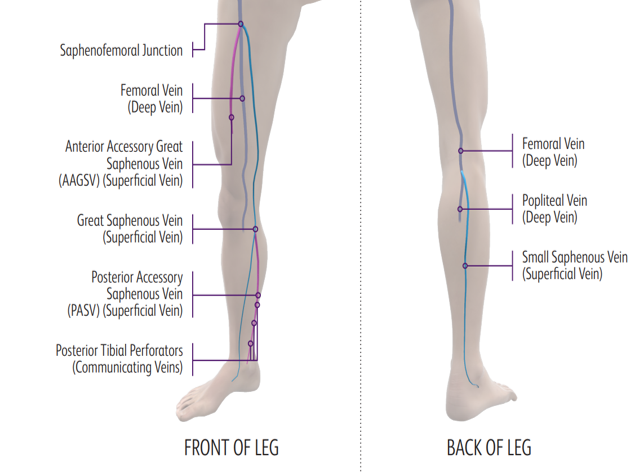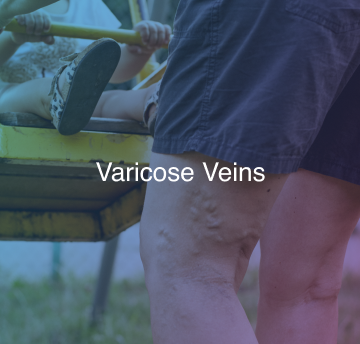What Causes Varicose Veins?
Increased venous pressure and enlargement of the leg veins can occur for a number of reasons. These include improper valve function, dysfunction of calf muscle pump or even venous obstruction. Keep in mind, these one-way valves in your legs work hard to fight against both distance and gravity to propel blood back toward the heart. If they weaken or malfunction, blood can pool in the legs, which can then lead to an imbalance. This imbalance of blood flow causes a pressure increase in the venous system leading to venous reflux which can result in leg pain, heaviness, swelling or venous ulcers.15,16 For some individuals, these symptoms can display as tortuous, visible bulges on the surface of the skin also referred to as varicose veins.4

Which Veins Are Affected?
The great saphenous vein (GSV) is the longest vein in the body. It typically runs a superficial subcutaneous course from mid thigh to knee and is closely associated with saphenous nerve below mid-calf. The small saphenous vein (SSV) begins posterior to the lateral malleolus and travels up the calf between two heads of gastrocnemius muscle. It may also have a thigh extension and this vein usually drains into the sapheno-popliteal junction (SPJ).

Chronic Venous Insufficiency
CVD can become a serious health issue if the disease continues to progress.15 Varicose veins can be early manifestations of chronic venous insufficiency (CVI) which is usually reserved for more advanced stages of CVD.17 Varicose veins and CVI together make up 57% of the total U.S. population who have CVD (100 million out of 175 million people).6 Early detection and intervention can prevent progression of this disease.


